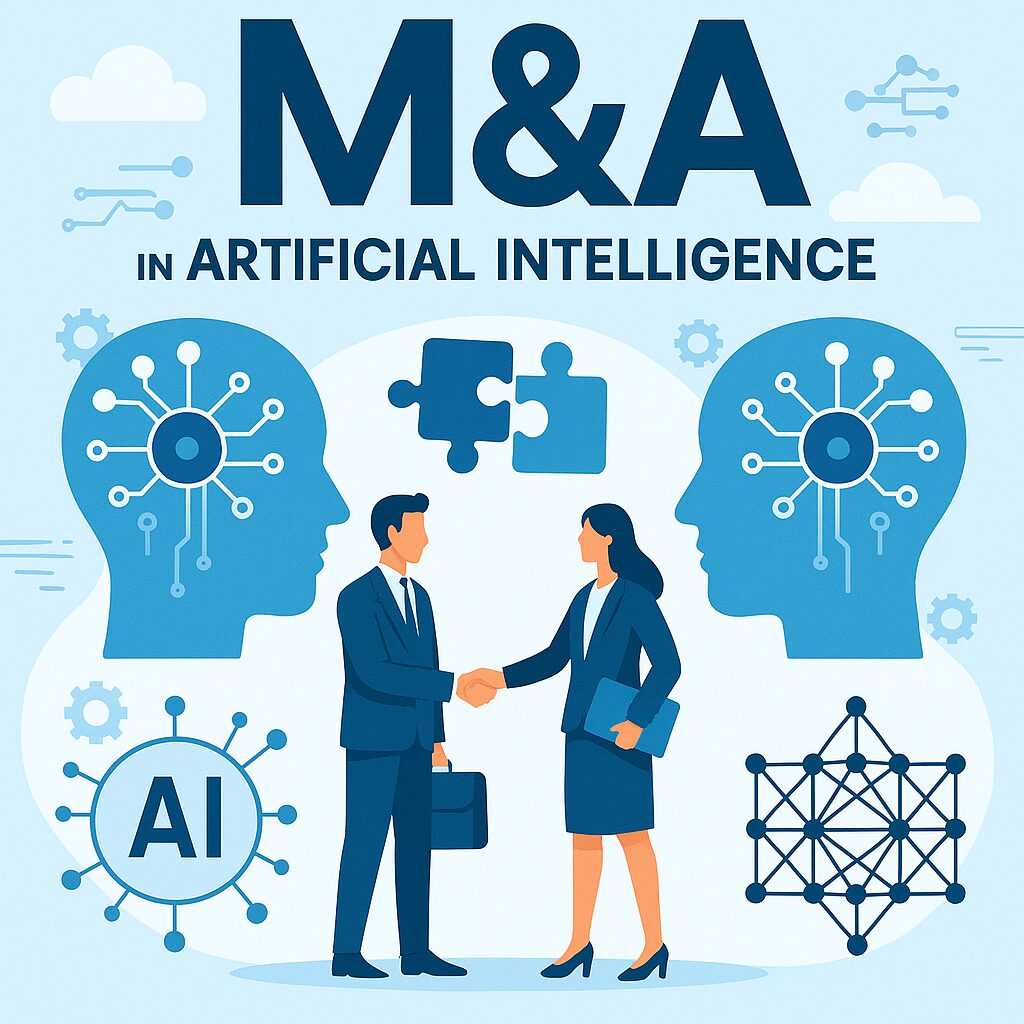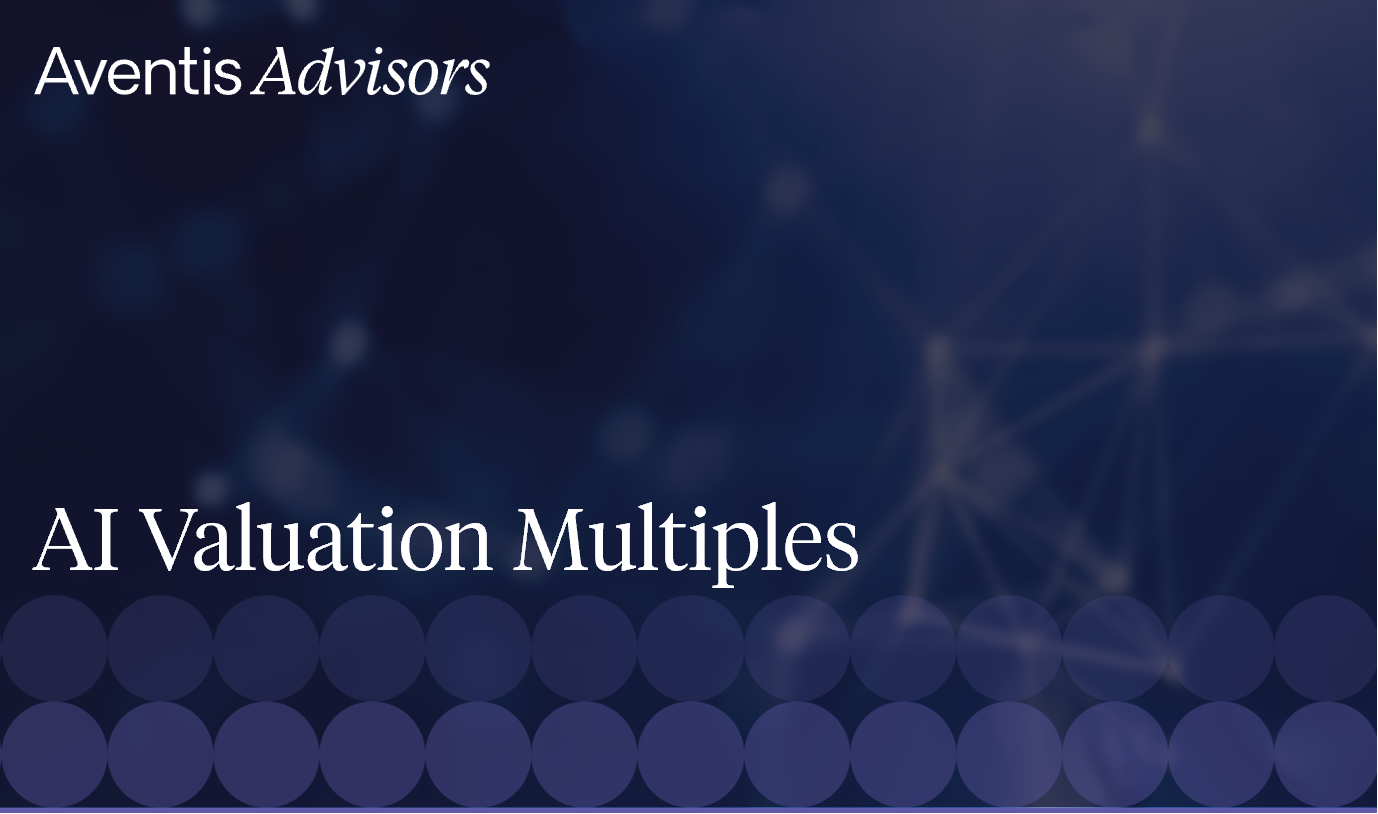Introduction
As artificial intelligence reshapes global markets, acquiring AI startups has become a key growth strategy for many enterprises. However, AI M&A brings distinct challenges—ranging from overvaluation and opaque technologies to regulatory hurdles, cultural integration issues, and geopolitical risks. These deals require a specialized approach to risk assessment and management across all phases of the transaction.
This article outlines the top nine risks unique to AI acquisitions and highlights the importance of aligning each deal with a clear strategic rationale. Drawing on real-world examples—including the collapse of Builder.ai, Tally, Ghost Autonomy, Artifact, and Eaze—it offers practical strategies to help acquirers avoid common pitfalls and maximize long-term value.

1. Overpaying for the Target Company
AI companies are often valued based on their future potential rather than present profitability. The fear of missing out and competitive pressures can lead to overbidding and inflated valuations that fail to reflect operational reality. To avoid this, it is crucial to thoroughly evaluate the target company’s assets, systems, and market position as part of the valuation process.
Builder.ai, once valued at over $1B and backed by Microsoft, filed for bankruptcy in 2025. Overoptimistic forecasts and a misalignment between tech narrative and actual performance contributed to its financial collapse. Similarly, Tally, despite raising over $200M, couldn’t sustain its financial model and pivoted too late. These cases highlight how poor valuation practices and the absence of a comprehensive valuation report can result in overpayment, ultimately eroding shareholder value.
Mitigation Strategies:
- Conduct independent, scenario-based valuations that test assumptions under downside conditions.
- Benchmark against comparable AI exits, not just headline valuations
- Align valuation with strategic fit and measurable synergies, rather than market excitement
- Ensure the determination of an accurate purchase price by avoiding poor valuation practices and relying on a comprehensive valuation report to guide negotiations and protect shareholder value
Ultimately, aligning valuation with expected outcomes and protecting shareholder value is essential to avoid costly mistakes in AI M&A.
2. Inadequate Due Diligence
AI due diligence demands more than reviewing financials and legal contracts. Acquirers must conduct comprehensive due diligence, including a detailed review of financial statements, to validate the actual contribution of AI, the quality of proprietary data, IP ownership, and security of the tech stack. The due diligence phase is a critical period for evaluative and investigative activities, where early assessments of integration challenges and the assembly of specialized teams help ensure informed decision-making and minimize surprises.
Builder.ai marketed itself as a fully automated AI platform, but was later revealed to rely heavily on human engineers—undermining investor trust. Likewise, Ghost Autonomy’s approach to self-driving AI with LLMs failed to gain industry confidence and eventually collapsed due to doubts over technological feasibility and lack of adoption. These cases highlight the risks of an inadequate diligence process and the necessity of thorough due diligence, especially regarding intellectual property and technology claims.
Mitigation Strategies:
- Engage third-party technical experts to audit model architecture, IP claims, and data lineage
- Validate the role of AI in the product offering—how much is truly automated vs. human-driven?
- Examine the company’s AI ethics protocols and adherence to explainability and regulatory standards
- Implement a comprehensive due diligence process, including financial due diligence and a careful review of financial statements, to identify and mitigate risks related to intellectual property, technology, and overall business health
3. Integration Challenges
Post-merger integration (PMI) challenges often derail AI acquisitions, especially when innovation pipelines are disrupted, or talent is lost. The integration process involves not only tech integration, workflow alignment, and cultural fit, but also addressing integration risk as a key challenge and managing integration efforts to ensure a smooth transition.
Builder.ai underwent a leadership shake-up months before bankruptcy, which contributed to employee uncertainty and poor integration outcomes. Other companies, like Eaze, saw their operations falter due to mismanaged scale-up and cultural dissonance—even with a strong AI infrastructure. Integration failures and complex integration challenges can threaten integration’s success, and owner or leadership involvement is crucial to ensure the integration proceeds smoothly, making thorough planning and risk mitigation essential.
Mitigation Strategies:
- Prioritize integration planning by developing a detailed integration plan that sets clear priorities, milestones, and governance to enable efficient integration
- Establish a detailed integration roadmap with defined KPIs, resource allocation, and change management planning
- Ensure retention plans for key technical talent, particularly data scientists and engineers.
- Protect R&D momentum by allowing acquired teams operational autonomy during the initial post-close phase
4. Regulatory and Legal Risks
AI regulation is evolving rapidly, especially around data privacy, algorithmic fairness, and ethical deployment. Acquiring a company with unverified practices or unlicensed data usage can trigger litigation or fines. Regulatory concerns, if not addressed, can significantly impact the acquisition process and overall deal success.
AI startups like Eaze, though not failing due to AI misuse, struggled with regulatory shocks, including Google’s ban on in-app cannabis purchases and heightened labor disputes. These kinds of issues—while outside core AI tech—still impact M&A value in compliance-heavy industries. Litigation risks and legal fees can also arise from regulatory issues, affecting deal valuation and post-merger integration.
Mitigation Strategies:
- Initiate early engagement with legal counsel specializing in AI and privacy law
- Conduct compliance audits across IP, data use, customer consent, and employee contracts
- Assess risks related to AI use in regulated sectors like healthcare, fintech, or autonomous driving
- Proactively engage with regulatory authorities to identify and address regulatory concerns during the acquisition process, reducing the likelihood of unexpected legal costs and delays
5. Security Concerns
AI companies often handle massive datasets and rely on third-party cloud infrastructure. Weak cybersecurity practices can leave critical IP vulnerable and expose the acquirer to post-deal breaches.
While not the only reason for failure, Tally and Ghost Autonomy both operated in sectors (fintech and autonomous vehicles) where data protection is paramount. Cyber vulnerabilities or failures to meet compliance thresholds can stall product deployment or damage public trust.
Mitigation Strategies:
- Review past incidents and perform comprehensive penetration testing during due diligence
- Evaluate data encryption protocols, access control systems, and DevSecOps maturity
- Develop a unified post-close cybersecurity integration plan
- Address potential cyber threats by implementing proactive monitoring and response measures
- Use project management platforms to facilitate secure information sharing, enhance transparency, and manage security concerns throughout the M&A process
6. Cultural Clashes
AI startups thrive on agility, autonomy, and experimentation. Acquiring organizations—especially larger, process-heavy ones—can unintentionally suppress innovation and alienate top talent if cultural integration and human capital management are not prioritized.
Startups like Artifact, despite early media buzz and initial downloads, failed in part due to lack of strategic focus and internal misalignment. Their attempt to become everything at once (news aggregator, social app, recommendation engine) confused users and diluted internal priorities—problems that escalate under new ownership if culture isn’t aligned. Company culture, human capital issues, and employee concerns—especially regarding critical employees and key employees—can significantly impact the success of a merger or acquisition.
Mitigation Strategies:
- Begin with a cultural compatibility assessment—early in the deal process
- Conduct cultural due diligence to identify and address cultural differences, involving human resources and HR professionals to manage human capital and human capital issues
- Craft a joint post-close vision that respects startup innovation while bringing needed structure
- Use communication platforms and regular touchpoints to build trust and reduce attrition
7. Unforeseen Costs
AI startups may carry hidden financial liabilities—undisclosed lawsuits, deferred infrastructure expenses, underfunded commitments, or tech debt—that don’t appear on the balance sheet.
Builder.ai‘s eventual insolvency highlighted poor cost planning and weak financial transparency. Likewise, Shyp and Tally struggled with flawed monetization models that couldn’t sustain high operating costs, even with significant capital raised. These cases show how significant financial challenges and failure to monitor financial health can lead to business failure.
Mitigation Strategies:
- Include contingency budgets and buffers in your financial model
- Run forensic accounting reviews to uncover off-balance-sheet risks
- Build scenario analysis to prepare for worst-case cost overruns or delayed ROI
- Identify and assess financial risks, commercial risks, and potential financial strain during due diligence to avoid unexpected costs and ensure stability

8. Human Capital Risks: Losing Key Talent and Expertise
Human capital is often the most valuable—and most vulnerable—asset in an AI acquisition. The specialized nature of AI work means that key personnel, such as machine learning engineers, data scientists, and research leaders, hold critical domain knowledge that’s not easily replaced. M&A deals that don’t carefully manage talent retention risk triggering an exodus that can derail innovation and ROI.
The recent wave of departures from OpenAI, including high-profile researchers and safety experts, has spotlighted how fragile top-tier AI teams can be—even in the most well-funded, mission-driven organizations. Disagreements over company direction, ethics, and integration with leadership decisions have led key talent to leave and start competing ventures. In an acquisition context, such exits could drastically alter the strategic value of the deal.
Similarly, Builder.ai’s leadership reshuffle, occurring just months before its collapse, further destabilized internal teams. The replacement of its founder with a new CEO signaled internal friction, contributing to operational uncertainty and employee disengagement during a critical transition period.
Why It Matters in M&A:
- The departure of just a few pivotal individuals can leave gaps in model architecture knowledge, proprietary tooling, or product roadmaps
- Employees may perceive cultural or strategic misalignment post-acquisition, prompting attrition
- Disengaged or disgruntled talent can also pose security risks, especially when access to sensitive algorithms or datasets isn’t tightly controlled
Mitigation Strategies:
- Conduct talent due diligence—assess employee sentiment, retention risks, and key-man dependencies before the deal closes
- Create clear, compelling retention packages, including equity rollovers, bonuses, and career development tracks
- Define a transparent post-acquisition communication plan that addresses career concerns, team structure, and the strategic vision
- Secure sensitive assets by implementing role-based access controls and tracking IP ownership during employee offboarding
9. Insufficient Communication and Change Management
Insufficient communication and poor change management are significant risks in mergers and acquisitions, often leading to integration failures, cultural clashes, and the loss of key talent. Without a comprehensive communication plan, the acquiring company may face unrealistic expectations, financial strain, and a breakdown in trust among employees and stakeholders.
Many integration failures can be traced back to insufficient communication and lack of transparency during the integration process. When employees, customers, and key stakeholders are left in the dark, uncertainty grows, leading to resistance, attrition, and even poor valuation practices that can impact the expected benefits of the deal. Inadequate change management can also exacerbate cultural differences and hinder the achievement of strategic objectives.
Mitigation Strategies:
- Develop a comprehensive communication plan that includes regular updates, town hall meetings, and open channels for feedback to assure robust communication throughout the integration process
- Use project management platforms and collaboration tools to facilitate transparent information sharing, track progress, and identify potential risks in real time
- Integrate change management into the due diligence process by assessing the target company’s communication and change management practices, and identifying areas for improvement
- Identify and engage key stakeholders early, ensuring their input is incorporated into the integration plan and that they remain informed about expected benefits and progress
- Address cultural differences proactively through targeted communication and training, reducing the risk of integration failures and unrealistic expectations
- Prepare a comprehensive valuation report and share key findings with relevant stakeholders to build credibility and maintain focus on strategic goals
- Continuously monitor for signs of insufficient communication or resistance to change, and adjust the communication plan as needed to ensure a smooth transition and minimize significant financial strain
By prioritizing communication and change management, companies can manage risks, support a smooth transition, and achieve the full value of their mergers and acquisitions.
Conclusion: AI M&A Success Demands Discipline, Not Hype
It is often said that nine out of ten startups fail within their first year, often due to poor product-market fit, financial instability, or mismanagement—not lack of innovation. Acquiring an AI company can provide strategic leverage, but only if approached with realism, structured diligence, and post-close planning. Effective risk mitigation, proactive efforts to manage risks, and a comprehensive communication plan are essential to assure robust communication and facilitate a smooth transition during mergers and acquisitions.
Builder.ai’s collapse and the failures of firms like Ghost Autonomy, Artifact, and Eaze are not just startup fables—they’re critical case studies for M&A teams. Success hinges on resisting hype, validating substance, and preparing for integration from day one. In post-merger integration, engaging key stakeholders, clearly communicating expected benefits, focusing on synergy capture, and protecting or growing market share are vital. The acquiring company must thoroughly analyze the target company’s risks to ensure a successful outcome. It is essential to conduct thorough due diligence and integration planning for the acquired company, assessing financial, legal, operational, and cultural aspects to ensure a smooth transition and mitigate risks. Unpredictable events and market disruptions can impact expected outcomes, making it crucial to have a clear strategic rationale and contingency plans in place.
Key Takeaways
✅ Apply independent, multi-scenario valuation models
✅ Perform technical and IP due diligence, including AI audits
✅ Plan for integration with a focus on people, systems, and product continuity
✅ Prioritize regulatory, reputational, and cybersecurity reviews
✅ Mitigate talent flight with cultural alignment and communication planning
✅ Prepare financially for contingencies and unforeseen operational costs
Why You Should Partner with a Technology M&A Advisor When Acquiring an AI Company
AI acquisitions are complex — each business has unique technology, talent, and hidden risks. A specialized M&A advisor helps you identify the right targets, assess value, and manage due diligence efficiently. We uncover and mitigate technical, legal, and commercial risks — so you don’t overpay or end up acquiring a house of cards built on hype. Our involvement can significantly enhance execution speed, ensure a smoother, more coordinated process, and help you achieve better pricing. And because our success is tied to yours, we aim to build a long-term partnership as your advisor of choice for future deals.
About Aventis Advisors
Aventis Advisors is an M&A advisor focusing on technology and growth companies. We believe the world would be better off with fewer (but better quality) M&A deals done at the right moment for a company and its owners. Our goal is to provide honest, insight-driven advice by clearly laying out all the options for our clients – including the one to keep the status quo.
Get in touch with us to discuss how much your business could be worth and how the process looks.
Sign up for our newsletter below to stay current on valuation trends.





